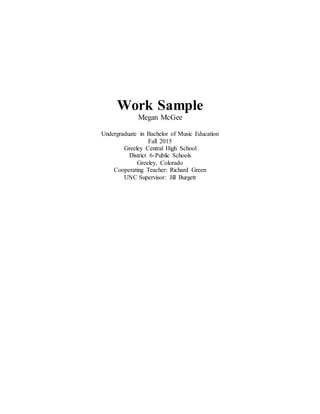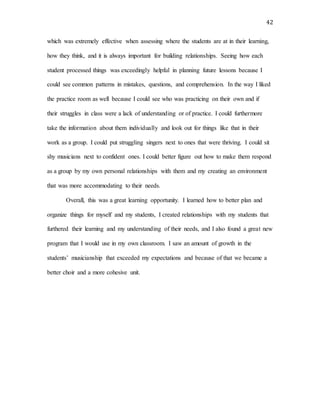This lesson plan focuses on increasing students' music literacy through sight reading. The teacher introduces solfege syllables, Curwen hand signs, and basic musical concepts like note values. Students practice identifying pitches using solfege. They also start learning a new piece of music, applying their solfege knowledge. Formative assessments evaluate understanding. The goal is for students to successfully sight read under level 1 examples on ThePracticeRoom.net, a website used for individual practice.










































